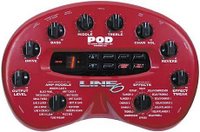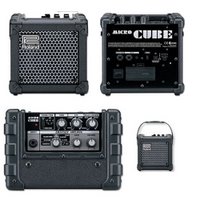
The Waltons
My wife absolutely loves her cell phone. She loves programming different ring tones to identify who is calling. She has her contact list maxed out. And when someone gets a new phone, she's jealous because the newer phones do more than hers.
Right now she's scheming for a pink RAZR phone of course. (She's eligible for a new phone in September, I better start saving)
But last week she found out you can have custom ringers on your phone. So now, when anyone calls her cell phone, you no longer hear her phone ringing on your phone, you hear instead... The Theme From the Walton's television program from the 1970's. It sounds as if you were immediately put on hold without even being told they were gonna put you on hold. But no, it's just the way her phone rings from the caller's point of view.
I wish she hadn't heard of this. When I call her during the day, I end up having that frazzling tune stuck in my head until I can hear some other music.
Which is exactly why I'm writing this, the Walton's tune is stuck in my head! Oh, the Humanity!
She could have at least chosen Metallica or something with cool guitar in it.
Warning: Guitar Stuff Ahead!
Guitar Amplifiers
When I first started playing guitar in the late 1990's, I read every guitar magazine, and every internet article about tone that I could find time for. I knew that, when I had learned to play, I would need to get me a great amp.

Then and now, I think the holy grail of electric guitar tone is a Les Paul through a Marshall amp. So, when I had the money, I bought a Marshall JTM-30 combo amplifier. This was the spring of 1998. 30 Watts of tube heaven. Absolutely beautiful clean tone as well as a great distortion sound. Granted, you can't get great metal sounds from a 30 Watt, open back combo amp, but this thing did up to hard rock with beautiful sound.
Then, there started to be some rumblings in the amplifier world. For years amp makers had tried to make solid state analog amps and then digital modeling amps that sounded like tube amps, but with the dependability of solid state amps. (I.E. didn't have to change tubes).
And by the end of the 1990's there were some companies that were able to launch lines of amps that sounded almost as good as a real tube amp. These amps had the added bonus of being able to sound like many different amps. A Marshall stack. A Fender Champ from the 50's. And as the 1990's ended three of my friends that play guitar each bought the same digital amp, a Line 6 AX2 212. I heard three different players able to dial in many, many sounds, and THEY ALL SOUNDED REALLY REALLY GOOD.
People who were fanatic about only playing through real tube amps did, and still do, claim to be able to immediately tell the difference between a digital amp and a tube amp. But for me, the digital amps had gotten to the point where they sounded just as great, and to be able to have essentially 20-30 amplifiers in one amp was awe inspiring.
The digital amps are made to take the incoming signal from your guitar, run this signal through a Digital Signal Processor (DSP) and manipulate that signal, and send it on through the power section and on to the speaker. And in the digital world the max of up to a 3 or 4 KHz guitar signal is dog slow, and easy to manipulate. So, a couple of DSPs on in the amplifier circuitry, and some quality engineering, and you end up with an amp that way exceeds most player's needs. Especially someone like me who is an amateur who will never be a traveling pro guitarist.

After a few more years, I finally sold the Marshall and bought a Line 6 POD. Looks like a big, red, aluminum kidney bean with knobs. And I bought a Tech 21 Power Engine 60, which is basically a 60 Watt combo amplifier without a pre-amp. I use the POD as the pre-amp, and it sends the processed guitar tone to the Power Engine. So I effectively have 32 guitar amplifiers with various effects like distortion, phaser, tremolo, etc. all in one amp.

But the real beauty of my setup is when I need to play my guitar at church, I just take the POD and plug it directly into the mixing board. The POD weighs just a couple of pounds. I don't have to take my Power Engine, thus saving wear and tear on my pathetic back.
And boy, does this thing sound amazing. It can make my Power Engine sound like a closed-back Marshall stack. Metal mayhem! I can dial in all kinds of sounds to maximize the sound of each of my guitars and save the settings for future use.

Latest Addition
The Roland Micro Cube is without a doubt, the best sounding tiny amp I have ever heard. It comes with an AC adapter but it also uses 6 AA batteries for taking it anywhere you want. Like my back patio for practicing and enjoying the beautiful Florida evenings. Go to Roland's web site and check out the Demo of this little beast. I think you'll be impressed. It is also uses DSP and can sound like 5 or 6 amps and they sound spectacular.
Muy Caliente!
2 comments:
We agree on something!
New York Lefto here -- but I just wanted to tell you that I totally agree with you about the Power Engine 60 -- it's a fantastic if you play through a pod or a preamp. I use it with my PRS McCarty Hollowbody 1, a Jekyll & Hyde Overdrive, a Sansamp Classic, a Carl Martin Chorus, a Holy Grail Reverb, and an Ernie Ball Volume pedal.
Superb! Keep rockin'. Chris O. NYC
What a great site »
Post a Comment